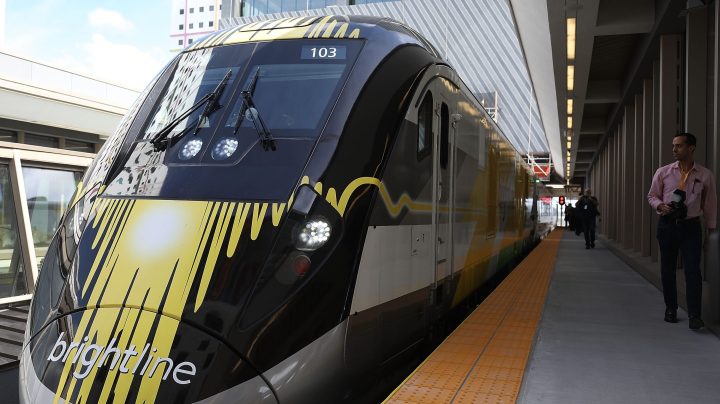
More private companies are investing in passenger rail — here’s why
More private companies are investing in passenger rail — here’s why

A new passenger rail service was supposed to open in Florida this upcoming weekend, taking passengers from Miami up to Orlando. That’s been delayed, with no new opening date set so far.
But the plan is for this to be an extension of a rail line operated by a private company called Brightline —not Amtrak, which runs pretty much every other passenger train in this country. Brightline also plans to build a passenger train from Los Angeles to Las Vegas, which it hopes to open in time for the 2028 Olympics in LA.
Projects like these can cost billions, and the passenger rail industry is not exactly known for big profits. So why are private companies getting into the passenger rail game?
Back in the day, private companies took passengers on trains all over the United States, all the time, said Robert Puentes, the head of the Eno Center for Transportation.
“Within cities, between cities, all across the country. And then in the 1970s, it all started to change,” Puentes said.
Rail companies were losing money on passenger trains, so Congress created Amtrak to run the routes instead. But outside the Northeast, passenger rail has kind of limped along ever since.
One reason: Amtrak mostly relies on freight rail tracks, and those cargo trains often get to go first. That leads to delays for Amtrak.
In Florida, it’s different. The company developing the new route also owns the tracks, and a bunch of nearby real estate, said John Robert Smith, chair of the group Transportation for America.
“This was a real estate development project for them,” Smith said. “And as they built out the rail, they built out apartments and condominiums.”
That gave the company built-in ridership.
Brightline got millions of dollars from the government for the Florida project. But out west, they’re asking for nearly $4 billion from the feds.
And that’s typical.
“Passenger rail needs a public subsidy to work,” said Adie Tomer, a senior fellow at Brookings. “That’s the case for driving in terms of highways or air travel in terms of airports and air traffic control systems.”
And right now, there’s federal money up for grabs from the infrastructure law passed a few years ago, Tomer said. And that presents an opportunity for new rail.
“For private market entrants to look for areas where they can turn a profit both for their shareholders while still offering a competitive service to their passengers,” Tomer said.
Still, there’s a wild card: Climate change. Railroad tracks across the South have warped this summer under extreme heat, and coastal erosion is threatening lines in California.
“You’ve got to make sure that the infrastructure that is being built now is going to be resilient,” Puentes said.
Not just for today, but for a warmer climate going forward.
There’s a lot happening in the world. Through it all, Marketplace is here for you.
You rely on Marketplace to break down the world’s events and tell you how it affects you in a fact-based, approachable way. We rely on your financial support to keep making that possible.
Your donation today powers the independent journalism that you rely on. For just $5/month, you can help sustain Marketplace so we can keep reporting on the things that matter to you.

















